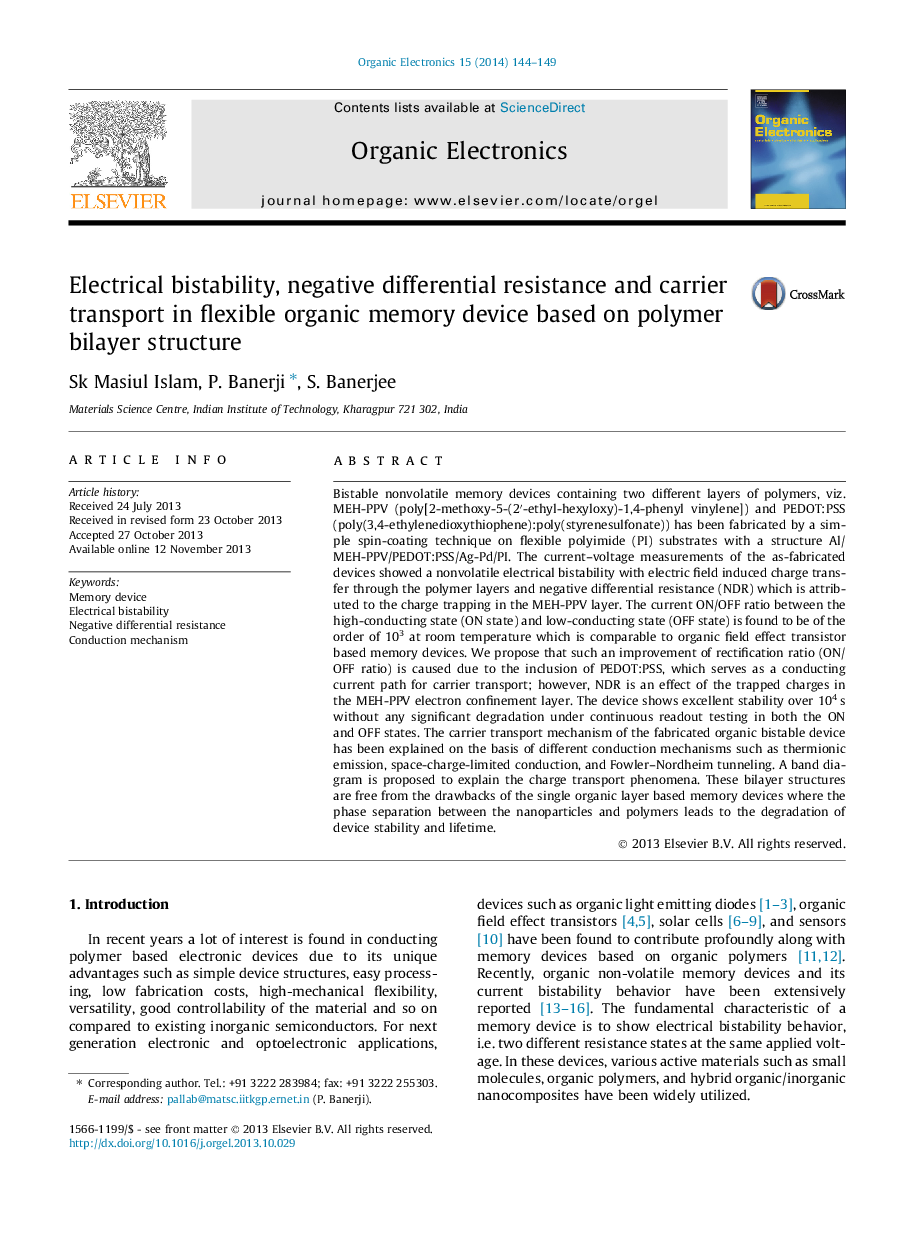| Article ID | Journal | Published Year | Pages | File Type |
|---|---|---|---|---|
| 1263863 | Organic Electronics | 2014 | 6 Pages |
•We fabricate nonvolatile flexible organic memory devices based on bilayer polymer.•I–V characteristics show electrical bistability & negative differential resistance.•The device exhibits high current ON/OFF ratio with prolonged retention time.•Carrier transport mechanism is suggested for both ON and OFF state.
Bistable nonvolatile memory devices containing two different layers of polymers, viz. MEH-PPV (poly[2-methoxy-5-(2′-ethyl-hexyloxy)-1,4-phenyl vinylene]) and PEDOT:PSS (poly(3,4-ethylenedioxythiophene):poly(styrenesulfonate)) has been fabricated by a simple spin-coating technique on flexible polyimide (PI) substrates with a structure Al/MEH-PPV/PEDOT:PSS/Ag-Pd/PI. The current–voltage measurements of the as-fabricated devices showed a nonvolatile electrical bistability with electric field induced charge transfer through the polymer layers and negative differential resistance (NDR) which is attributed to the charge trapping in the MEH-PPV layer. The current ON/OFF ratio between the high-conducting state (ON state) and low-conducting state (OFF state) is found to be of the order of 103 at room temperature which is comparable to organic field effect transistor based memory devices. We propose that such an improvement of rectification ratio (ON/OFF ratio) is caused due to the inclusion of PEDOT:PSS, which serves as a conducting current path for carrier transport; however, NDR is an effect of the trapped charges in the MEH-PPV electron confinement layer. The device shows excellent stability over 104 s without any significant degradation under continuous readout testing in both the ON and OFF states. The carrier transport mechanism of the fabricated organic bistable device has been explained on the basis of different conduction mechanisms such as thermionic emission, space-charge-limited conduction, and Fowler–Nordheim tunneling. A band diagram is proposed to explain the charge transport phenomena. These bilayer structures are free from the drawbacks of the single organic layer based memory devices where the phase separation between the nanoparticles and polymers leads to the degradation of device stability and lifetime.
Graphical abstractFigure optionsDownload full-size imageDownload as PowerPoint slide
